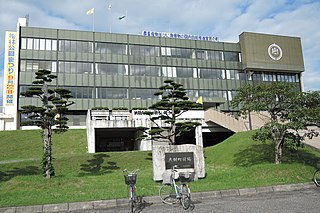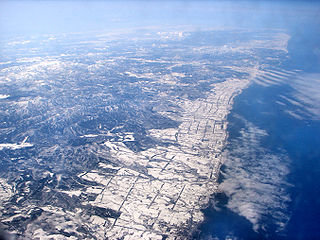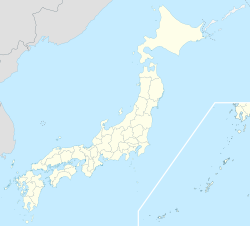
Obihiro is a city in Tokachi Subprefecture, Hokkaido, Japan. Obihiro is the only designated city in the Tokachi area. As of July 31, 2023, the city had an estimated population of 163,084. The next most populous municipality in Tokachi is the adjacent town of Otofuke, with less than a third of Obihiro's population. The city had approximately 500 foreign residents in 2008. The city contains the headquarters of the Fifth Division of the Northern Army of the Japan Ground Self-Defense Force. It also hosts the Rally Japan World Rally Championship-event.

Kushiro is a city in Kushiro Subprefecture on the island of Hokkaido, Japan. Located along the coast of the North Pacific Ocean, it serves as the subprefecture's capital and it is the most populated city in the eastern part of the island.

Pippu is a town located in Kamikawa Subprefecture, Hokkaido, Japan.

Biei is a town located in Kamikawa Subprefecture, Hokkaido, Japan. As of May 2024, the town has an estimated population of 9,343, and a density of 14 persons per km2. The total area is 677.16 km2.

Saroma is a town in the Okhotsk Subprefecture, Hokkaido, Japan.

Yūbetsu is a town located in Okhotsk Subprefecture, Hokkaido, Japan.

Hidaka is a town located in Hidaka Subprefecture, Hokkaido, Japan.

Kamishihoro is a town located in Tokachi Subprefecture, Hokkaido, Japan.

Shintoku is a town located in Tokachi Subprefecture, Hokkaido, Japan.

Shimizu is a small town located at the base of the Hidaka Mountain Range in Tokachi Subprefecture, Hokkaido, Japan. The name Shimizu is taken from the Ainu word "Pekerebetsu", which means bright clean river. As of 2011, the population of the town is 10,243, and its primary source of income is through agriculture. Shimizu, like many other towns in Hokkaido, is undergoing population decline.

Taiki is a town located in Tokachi Subprefecture, Hokkaido, Japan.

Hiroo is a town located in Tokachi Subprefecture, Hokkaido, Japan.

Ikeda is a town located in Tokachi Subprefecture, Hokkaido, Japan.

Toyokoro is a town in Tokachi Subprefecture, Hokkaido, Japan.

Rikubetsu is a town located in Tokachi Subprefecture, Hokkaido, Japan. It is located on the edge of the Tokachi Plain at an altitude of 207 metres (679 ft) above sea level.

Esashi is a town located in Sōya Subprefecture, Hokkaido, Japan. As of 30 June 2024, the town had an estimated population of 7,276 in 3918 households, and a population density of 8.1 people per km2. The total area of the town is 1,115.62 km2 (430.74 sq mi). The name of the town comes from the Ainu word "Esaushi", meaning "cape".

Shiranuka is a town located in Kushiro Subprefecture, Hokkaido, Japan. As of September, 2013, it has an estimated population of 8,910, and an area of 773.74 km2. The population has fallen significantly in recent years.

Betsukai is a town located in Nemuro Subprefecture, Hokkaido, Japan. As of April 30, 2017, the town has an estimated population of 15,179, and an area of 1,320.15 km2. The town is primarily agricultural, with numerous dairy farms. It comprises a part of the agricultural region referred to as "Milk Land Hokkaido".

Shinhidaka is a town located in Hidaka Subprefecture, Hokkaido, Japan. Shinhidaka is the most populous town, and the economic center of Hidaka Subprefecture.

Butadon (豚丼), often literally translated into English as pork bowl, is a Japanese dish consisting of a bowl of rice topped with pork simmered in a mildly sweet sauce. It also often includes a sprinkling of green peas. A popular food in Japan, it is commonly served with takuan. Buta means "pig" or "pork", and don is short for donburi, the Japanese word for "bowl". Butadon originated from the city of Obihiro, Japan.
- Butadon originated from the city of Obihiro, Japan. This version is known as Obihiro butadon.
- Butadon originated as an alternative offered by Gyūdon chain stores in response to the 2003 outbreak of Bovine spongiform encephalopathy. This version is known as Gyūdon chain butadon.


























